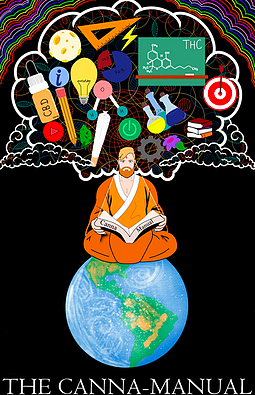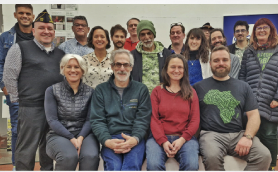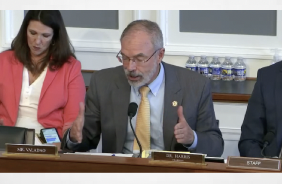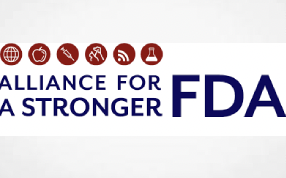Author Christopher Tasker writes
This book is considered consumer information and is being used to reduce the potential harms associated with the uninformed consumption of CBD products, their production, and safe sourcing in an emerging market.
About the Author
This book was written and produced by Christopher Tasker, Founder of Global Cannabinoid Solutions (GCS). Chris holds a Master’s degree (MRes) in cannabinoid medical research and has conducted first-hand research on human gut tissue and tumours to explore the therapeutic effects of cannabinoids and the endocannabinoid system in colorectal cancer and inflammatory bowel disease. Chris has supported the growth of informed cannabis debate across the UK, promoting cannabis education, harm reduction strategies and drug law reform. Translating these lessons from his research and community work, Chris now works with his partners at the forefront of the evolving cannabis industry. Chris and the expert community at GCS now work collectively to steer early cannabis enterprise with their multidisciplinary understanding of cannabis and endocannabinoid medicine.
About the Book – A message from the author
In recent years we have seen the impact of growing misinformation upon society. Nowhere has this been more pronounced than in cannabis debate and the patient’s battle for recognition. As part of our aim to bring cannabis science to the centre of our national consciousness, we feel it is vital to communicate this knowledge in a digestible format that nourishes informed debate.
Up until now, there has been a tremendous disconnect between science, industry, and society, resulting in an incoherent cannabis conversation. This book aims to provide readers with a solid foundation of knowledge of the relationship between cannabis and humans. With this, we hope to protect readers from the common myths and misconceptions around cannabis and continue to prepare the public for a wider discussion around cannabis and our treatment of drugs as a whole. For all the misinformation around cannabis, it provides an opportunity to begin educating the consumer.
This book would not have been possible without the early support of Mark Turner and Charles Clowes of Bud & Tender® who shared our concerns and facilitated the early creation of this independent piece. This was a time when most companies were looking to capitalise on misinformation and ignorance. Bud & Tender® saw the value in addressing this issue and kindly supported the creation of this book. A warm thank you to Bud & Tender® for wanting to put consumers first and supporting this initiative and much of the wider grass roots movement.
A special mention must also be made to the United Kingdom Cannabis Social Clubs (UKCSC) for facilitating the publication of this information and a thank you also to Lucid Minds for the incredible artwork. It is rare for industry and business to put consumers and the public first and a special thankyou must be made to these groups for their support. With this book we have been fortunate enough to be surrounded with a network of highly passionate and caring professionals who have supported us in producing this information. Without the support of these fine groups, this educational piece would not have been possible.
Contents
3.1. Busting the Sativa vs Indica Myth 13
3.5. Flowers, Leaves and Trichomes 18
4.1.1. The chemical composition of terpenes 21
4.2.1. Cannflavin A, B, and C 23
5.3. Synthetic cannabinoids 30
8.2. Cannabinoid Pharmacology. 42
9.1. Cannabis products and terminology 46
11.1. Preservation and longevity 53
Introduction
Cannabis and humanity share a unique relationship that spans thousands of years. We have internal biological systems that reflect this ancient relationship with cannabis. These unique fingerprints are expressed in all human cells and point towards a new generation of medicine. With modern technology we can explore these fingerprints and their unique link to human health and disease.
Public opinion about cannabis has varied tremendously over the past century. In recent decades, cannabis has been highly criminalised, nominally due to the focus on its potential to be abused as a psychotropic substance.
Cannabis in the hands of humanity possesses a universe of opportunity. Cannabis and hemp are one in the same and have played an exceptional role in the development of humanity. Up until now, cannabis has remained relatively unexplored by science, leaving a wealth of explorative potential, offering an almost entirely new branch of science and medicine that can benefit all of society.
Although they had great passion, early cannabis advocates lacked the critical academic research and science to support many of their arguments. This absence of evidence was primarily due to the ideological enforcement of a highly unproductive war on drugs, which has resulted in the global criminalisation of the plant.
In the past decade, medical support for cannabis has been revitalised by an accelerating tide of data that is uncovering the fundamental science behind these age-old medical claims. With abundant anecdotal reports of cancers being cured, and life-threatening illnesses being stopped in their tracks, it was only a matter of time before medical research was forced to explore these therapeutic claims.
This modern research has identified an exciting biological link between humans and cannabis, forming the basis for a new branch of medicine. The Endocannabinoid System (ECS) found in humans is a medical marvel discovered through the scientific study of cannabis. It is responsible for exerting the effects of cannabis. Its discovery marks the beginning of an entirely unexplored branch of medicine.
The use of cannabis by medical patients has become a passionately debated topic in the media and public forums, pressuring global political powers to re-evaluate their stance on the plant and its molecules. Across the UK, public cries for safe patient access to cannabis has provoked the British government to rethink their legal approach with a promising legislative step on the 1st of November 2018. Despite this new legislation, it remains exceedingly difficult for British patients to safely access cannabis products with the remaining 99% of the population still being criminalised if they are in possession of cannabis.
The governing body that provides national guidance and advice to the National Health Service (NHS) and its professionals is the National Institute for Health and Care Excellence (NICE). NICE provides a series of evidence-based guidelines that outline the best practices for UK medical professionals based on the extensive medical evidence and studies available to a committee of clinical experts. Medical professionals in the UK must adhere extremely closely to the NICE guidelines, which are legally established operational frameworks that provide the basis for UK medicine. These guidelines are developed based on evidence built up over years of surgical procedures, clinical trials and experimentation. Given this, cannabis presents a particularly sticky situation for all involved.
In 1944 The New York Academy of Medicine published The LaGuardia report. One of the first studies to substantially contradict the mainstream claims around the inherent dangers of cannabis in the United States, the epicentre of the ‘War on Drugs’ (LaGuardia, 1944; Kolb, 1945). For decades medical research into cannabis was discontinued, following a sustained campaign from the infamous Henry Anslinger and the American Medical Association in 1945 that forbade the exploration of cannabis for medical use. This campaign resulted in the classification of cannabis as a substance of abuse, killing cannabis research in its infancy.
Despite the recent renewal of cannabis research, if compared to opiates and opioids, we are some 30 to 40 years behind in our knowledge of cannabis medicines and their applications. This is the key issue currently facing NICE and the NHS.
Figure 1. The National Institute for Health and Care Excellence’s (NICE) recommendations on the use of cannabis-based treatments for chronic pain. Source: NICE.org.uk.
Although at first glance it would appear the UK government has enabled medical access to cannabis, NICE and other regulatory agencies currently lack the double-blind placebo-controlled drug testing studies that are required to develop medical guidelines for cannabis. Additionally, the tremendous unknown of the ECS means that not only are we unsure about how to use these medicines, but we also do not fully understand how they work. This would be somewhat comparable to us having discovered blood but not fully understanding the cardiovascular system or exploring insulin whilst being unaware of the pancreas.
The accessibility of cannabis remains very limited. We are decades behind in our understanding of this exciting new branch of medicine. The current blame game surrounding medical cannabis has generated a cloud of misinformation and chaos for patients across the UK who continue to struggle for sustainable access.
Although we lack the costly double-blind trials for specific cannabis-based medical products (CBMP’s), there still exists a wealth of published medical data demonstrating the vast potential of cannabis as a therapy in various diseases (British Medical Association, 1997; Kumar, Chambers and Pertwee, 2008a; Ahmed and Katz, 2016). We are, however, yet to even discuss the ECS, the entire basis for cannabis medicine.
“In a 2018 study of Canadian cancer patients, 43% of patients surveyed reported that they were currently in use of cannabis.” (Martell et al., 2018.)
To highlight some of the limitations to the current cannabis guidance, we can point to the most recent research review conducted by NICE, which explored the clinical and cost-effectiveness of cannabis-based medicinal products for people with chronic pain (NICE, 2019). When building this guidance, a very specific question was asked regarding the cost-effectiveness of products. The review identified 9,341 published scientific studies exploring the relationship between cannabis and chronic pain. Specific, however, to the questions being asked by NICE – regarding cost-effectiveness and safety – this review was left with just 20 double-blind randomised control trials (RCT) without exploring the science itself.
As essential as these guidelines are in medicine, it is apparent and fair to argue that the NICE methodology overlooks a great deal of the fundamental scientific evidence and rationale. NICE confines itself within the parameters of cost-effectiveness, rather than reflecting the reality of the scientific research. The use of cannabis was deemed to be safe but the cost of the small selection of products investigated outweighed the positive effects and, as such, they were not deemed to be cost-effective.
NICE has disappointed scores of patients who desperately need our medical and legal system to modernise. A great deal of these patients are criminalised for their crude use of cannabis while they await a legal nationally-accessible alternative. Do we continue to criminalise the already suffering patients for whom this cannabis legislation was altered for? Could we allow those patients who wish to do so to produce their own supply in the absence of a coherent medical access system and decriminalise this act? Is criminalisation in the best interests of patients and our communities? Could criminalisation be causing more harm? The novelty of this medical field is that we cannot truly say who this medicine is good or bad for, or whose illness should and should not qualify for a legal prescription. Who should decide whether a patient can try a “novel medicine” or plant that has existed for thousands of years? The medical curriculum and guidance for cannabis and the endocannabinoid system for our nation’s doctors has yet to even be written. Legislation and policy is always behind the times as we cannot legislate for unknowns. At current, we are criminalising 99% of our population in the event they wish to independently explore these unknowns.
This book aims to broaden the cannabis debate. We want to support patients left disillusioned by our cannabis laws and conflicting conversations. As we move through this guide we will be shining a light on many of the complexities, issues and opportunities facing this reemerging branch of medicine. We will look at the cannabis debate as it stands and the social implications of a growing acceptance of cannabis and other plant medicines into society. What we are seeing today is just the tip of the iceberg.
The good news is that the western world’s view of health is undergoing a not so subtle evolution. A Renaissance of sorts. Western medicine is progressing away from doctored product-centered medicine and moving towards giving patients the informed consent and power to choose their medical interventions and disease management strategies. Internationally, patients are becoming more informed of their illnesses and, as such, are demanding a greater say in their treatment strategies.
Conventional treatment options are limited for many diseases. For some conditions, tolerable treatment options are absent altogether and will not exist for some time. Desperation often encourages patients to explore alternative sources of therapeutic relief and health maintenance, namely cannabis. Thanks mainly to the internet, the accessibility of medical literature has allowed patients to be increasingly informed on their medical conditions, and the alternative treatment options available elsewhere. Should this be something you wish to explore personally following this book, we are here and will do our best to support you.
Medicine and pharmacy have evolved tremendously over the last decade. Unfortunately, these sectors continue to wrestle with the profitability and industrialisation of health and disease. The next generation of medicine is moving away from the ‘one size fits all’ model for patient treatment to an individualised and personalised treatment strategy. This holistic view accounts for the unique circumstances of the individual by tailoring their treatment to their specific needs and desires.
This evolution is also moving our focus from the treatment of disease to the prevention of disease through education and health awareness. In a world of growing misinformation, it is increasingly difficult to find factual and referenced information. This is particularly challenging when exploring cannabis and health. In recent years, the prevalence of anecdotal reports from patients crudely utilising cannabis medicinally has surged, provoking countless poorly informed news stories with oversimplified medical claims.
A great deal of research has been conducted on cannabis and its constituents. Every day, the therapeutic understanding of the molecules in cannabis is being reinforced by new scientific evidence.
The effects of cannabis are well studied. We are, however, many decades away from converting this into the RCTs being sought by NICE and the MHRA to activate cannabis medicines through the NHS. Such a wait is intolerable for the many patients suffering today.
The complexities of cannabis make it a class of its own and, for this reason, some of the shortcomings and limitations of our regulatory system are beginning to show. Many of these issues are pointing towards the need for reform and evolution. As the public demand for cannabis access increases, so too will the need for clinical guidance and the need for evidence to support cannabis use and methods of using these drugs in a clinical setting (Ben Amar, 2006; Pisanti et al., 2017). What the regulators are ultimately seeking is a selection of cannabis-based products that can be tested en masse. This is a decades long process and, as we have seen thus far, not the way to make impactful progress for the patients that are criminalised and suffering here and now. There is a clear overfocus on products and their supply rather than removing the barriers that are unfairly criminalising would-be patients. We keep recycling the same well trodden outdated frameworks expecting different results. These antiquated systems ultimately hinder even the most basic scientific progress, innovation and outside the box thinking which only serves to prolong the harm and suffering of patients.
As the political system catches up, it is no secret that despite its illegality, cannabis is being widely and crudely used by patients suffering from various chronic and terminal illnesses (Webb and Webb, 2014a; Martell et al., 2018). The therapeutic effects of cannabis are incredibly broad-ranging and patients often develop a greater understanding of the effects of cannabis on their disease and symptoms than their prospective doctor.
Cannabis is used by those living with everything from chronic pain to sufferers of spinal cord injuries and movement disorders (British Medical Association., 1997; Kumar, Chambers and Pertwee, 2008). In the eyes of the law, all of these people are criminals and as such those already suffering, otherwise law-abiding members of our society, are further burdened by the fear of law and prosecution.
Prospective patients find themselves in a strange environment. As a population, we widely accept the medical use of cannabis, but our laws still criminalise the countless patients crudely utilising cannabis at home who do not meet the strict medical qualification criteria. In 2018, the law change had appeared to have made cannabis accessible medically but, to date, only a small handful of patients have gained legal access. In many cases, the parents of the epileptic children for whom this law was changed are still forced to break the law to alleviate their child’s suffering or bear the costs of tremendous medical fees.
Feeling caught within this loop of frustration has left many patients and families feeling disillusioned, a scenario perhaps depicted best by Penrose’s stairs. Our laws, in their current state, are not fit for purpose and with continued education we hope to highlight this issue and create a people-focused conversation around cannabis and assess our drugs laws as a whole.
Figure 2. The illusion of medical cannabis progress and accessibility as depicted by Penrose’s stairs.
In this book, we are going to guide you through the rich tapestry of cannabis, cannabinoids, their effects, and their relationship to human health and wellness through the lens of science. This book has been designed to give you the fullest and most complete understanding of cannabis, the current political situation, and the future of cannabis, to ensure that the public is making informed decisions on their use of cannabis products.
Consumers are bombarded with advertisements from companies selling CBD products that often contain little to no CBD. These products are abundant across the UK and unfortunately, at the time of writing, remain unregulated, and the population unprepared. This absence of oversight has left companies accountable only to themselves and, as a result, we have seen some of the largest high street brands blatantly cashing in on low quality products.
Having identified this tremendous issue, the scientific team at GCS have joined forces with the wonderful team at Bud & Tender® to bring to you the most complete guide to cannabis available. Saturated with references to published medical research and articles that form the contents of this book. This cannabis survival guide will equip you, the reader, with all of the information necessary to make independent informed decisions regarding cannabis products and services.
Many of you reading this may be disillusioned by the mainstream cannabis conversation and the mass of information being thrown into the public sphere. We will cut through the fluff surrounding cannabis and ensure that everyone comes away from reading this book with a sound knowledge of the plant, its products and the science that underlie this incredible and diverse debate.


















